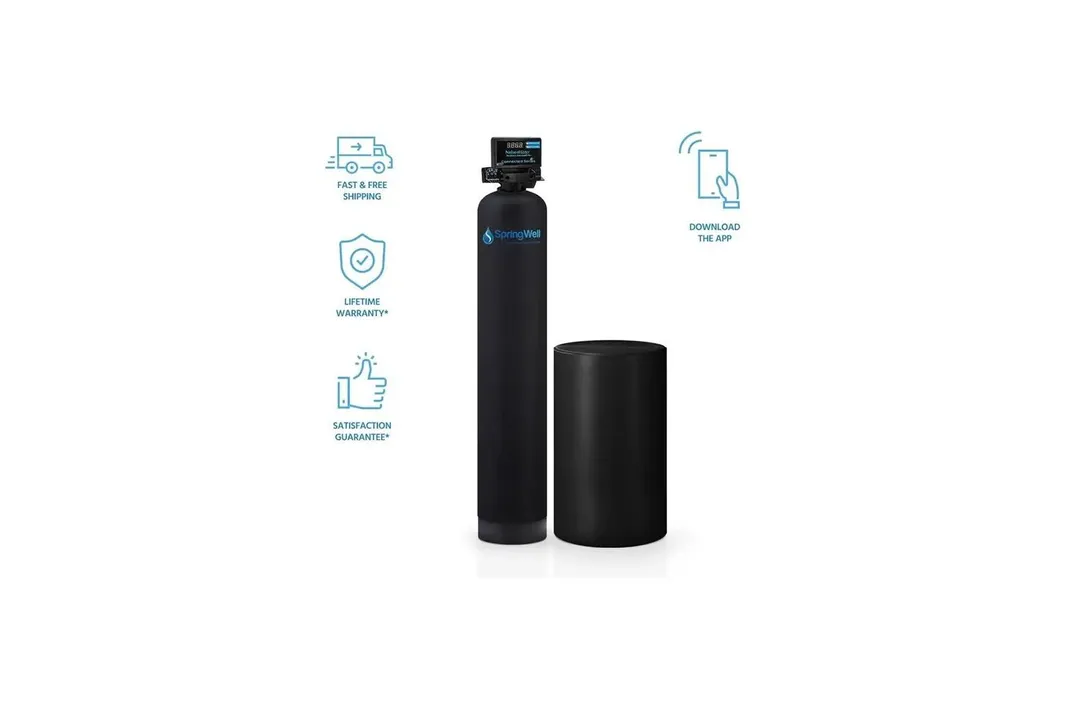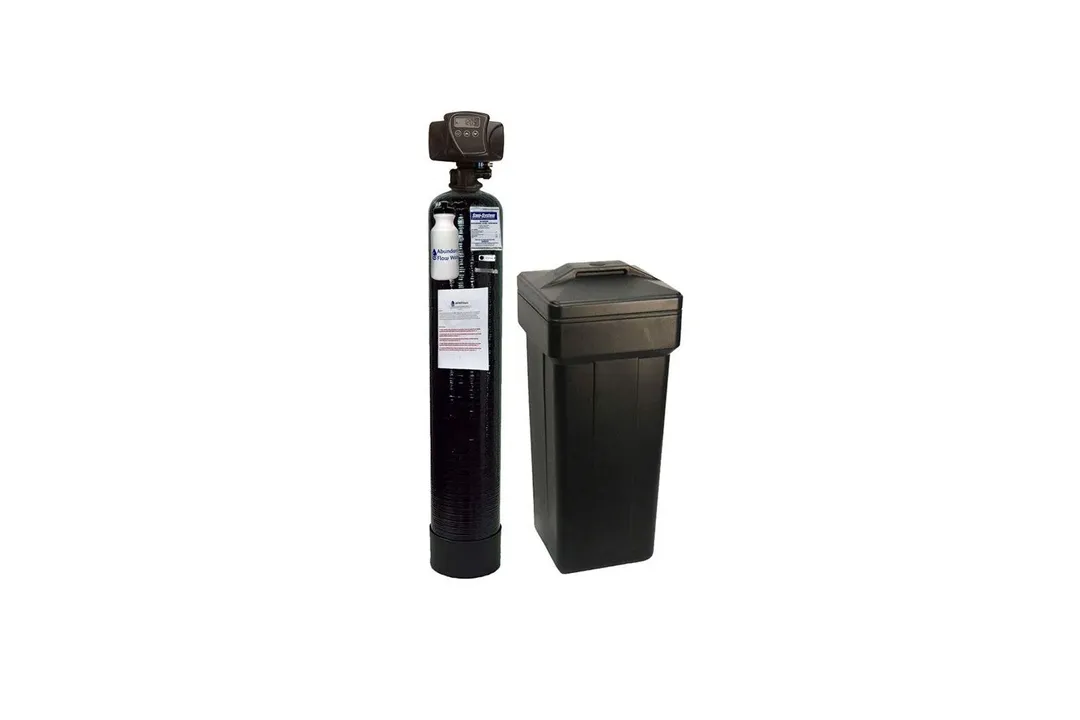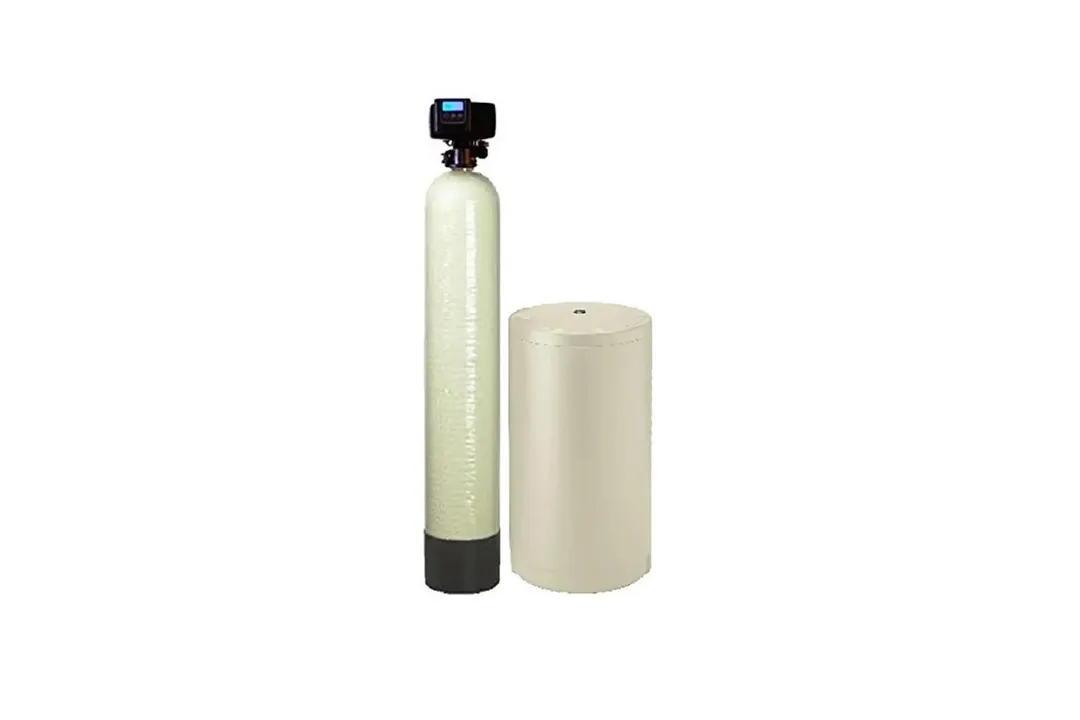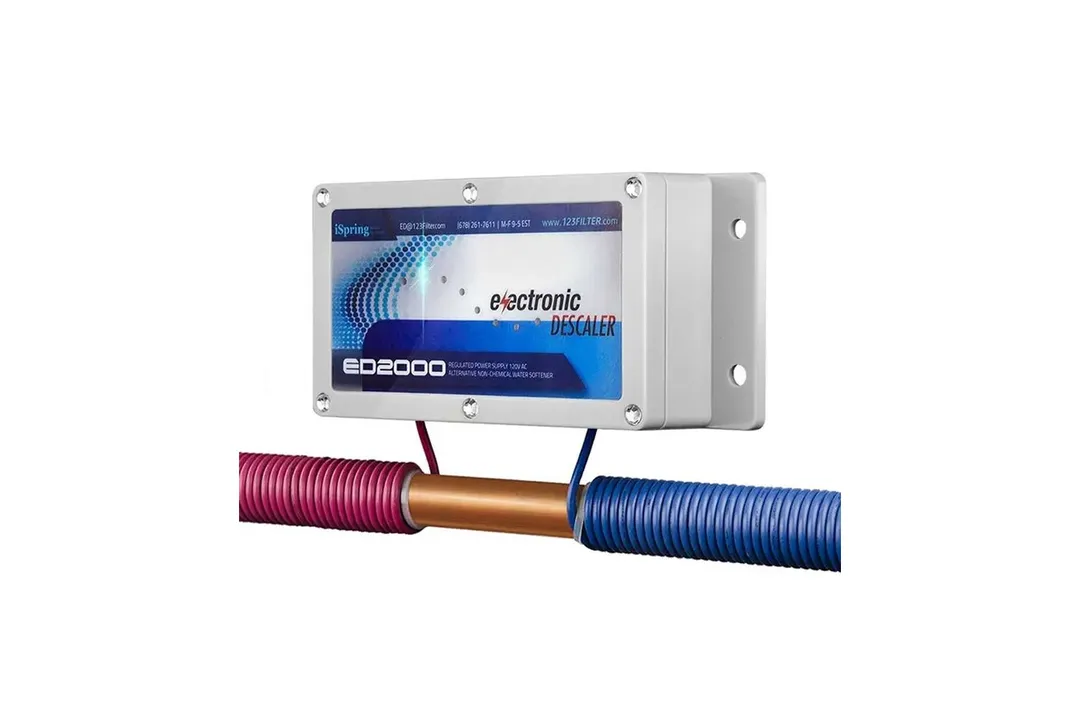The Best Water Softeners in 2024 Reviews & Buying Guide
A full guide on the best water softeners: the types, how they remove hard water, and reviews of the best salt-based and salt-free softeners.
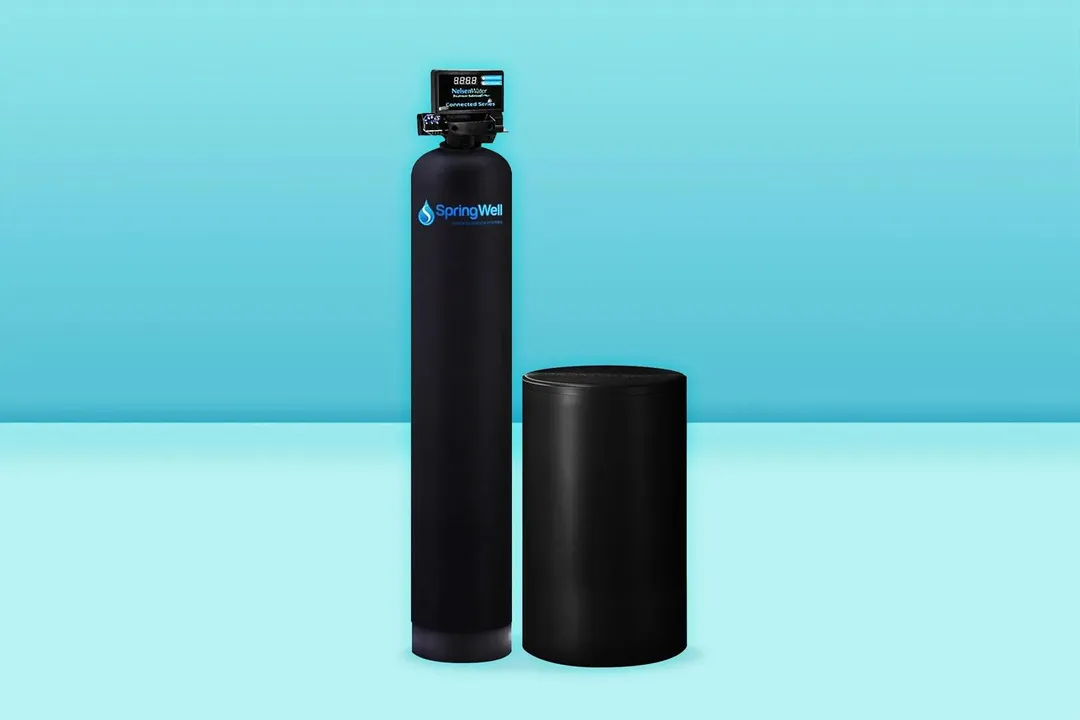
So you think you may have hard water, and you’re looking for an effective solution to deal with it— perhaps a quality water softener to take care of the issue.
Before we can find the right water softener for your home, however, let’s take a look at what hard water really is and how to determine if it’s an issue to be addressed in your household. After that, we will explore the ultimate ways to handle hard-water-related problems before diving into softener options.
Our Top Picks
To save you time and effort, we’ve tracked down the best residential water softening systems for your home. We’ve combed product specs and thousands of customer reviews to provide you with the information you need to choose the best system for you. In this section, we will explore each model’s most prominent features along with its pros and cons.
1. Best Overall: Springwell Salt Based Water Softener System
- Durable resin
- Flexible for households of different sizes
- Smart control using an app
- 6-month money back guarantee
- Lifetime warranty
- NSF-certified components but system is not certified
Salt-based systems, whose purifying prowess has proven effective on more than one occasion, are the ultimate choice when it comes to handling hard water. With a 10% crosslink resin and grain ranging from 32K to 80K, this salt water softener by Springwell is a system well worth considering when you’re dealing with an assortment of hard water problems at home.
Complete Control
Few if any other salt-based water softener systems allow as detailed and convenient control as this Springwell does. Instead of configuring the system with three little buttons and a boring, lifeless LCD screen like you would with a regular water softener, you can now make all the settings from your phone or tablet via Bluetooth connection.
Using an app (Legacy View), you can input water hardness level, monitor current water pressure, see how much soft water you have left, and if it’s time to schedule a new cleaning cycle.
You will be able to set the exact time for regeneration. The duration for backwash, rinse, brine refill, and valve settings are also adjustable at the tap of your finger. It’s never been so effortless to maintain a stable supply of soft water. At the same time, it will also reduce waste of resources from premature or overdone backwashing.
A Well-rounded Package
Springwell offers grain choices of up to 80K, ensuring a softening option whether yours is a bachelor’s home or a multigenerational household.
The system comes with everything you need. Apart from the softener tank, head, and brine tank, a bypass valve, mounting bracket, and a drain line are also included. Installation is simple— they recommend having professionals do it, but also have a clear DIY guide.
Because a water softener doesn’t filter water or remove microorganisms, the add-on includes a UV lamp. It can handle a wide variety of bacteria and viruses, from E.coli, and Cryptosporidium, to Giardia lamblia, further enhancing the safety of your water.
However, with its own control head and a smart design, the UV lamp will set you back by almost a thousand dollars.
Durable
The Springwell softener boasts a 10% crosslink resin, which lasts years longer than the standard 8% resin on other systems.
Its effectiveness is backed by a six month money-back warranty. You can return the product and receive a full refund within this period, no questions asked.
The system, its fittings, FutureSoft media, tanks, housings, bypasses, valves, and in/out heads are covered with a lifetime warranty against defects. There are more conditions applied if your water comes from a private well, so read the warranty details carefully and discuss it with their sales representative.
Price at time of publish: $1530.94
- Type: Salt-based
- Flow rate: 11 - 20 GPM
- Grain Capacity: 32K to 80K
- Warranty: Lifetime warranty on tanks and valves
2. Best Salt-Based: Fleck 5600SXT Water Softener
- Affordable
- Effective (certified to NSF standards)
- Auto + Real demand regeneration
- Simple control
- Durable (10% crosslink resin)
- Offers one single grain choice (48k)
The AFWFilters softener comes with a softener tank of 48,000 grains in capacity, a brine tank of standard size with float, a 1.5 cubic-foot commercial-standard 10% resin, and a Fleck control system that’s simple to navigate. It’s easily the best salt-based water softener on the market but for the limitation of grain options.
A Complete On-demand Metered System
Like many other salt-based softening devices on the market, this system can regenerate following a preset time cycle. However, what makes it an outstanding softener is its ability to rejuvenate based on actual usage.
The mechanism is actually not that complicated. The system measures the amount of water used in your household with a meter and nd regenerates itself when it reaches the maximum capacity or by following your preset cycle, whichever comes first.
This seemingly simple feature can save you a lot of salt, water, and electricity. Combined with the timed cycle, the system makes sure you always have soft water while preventing excessive use of salt and energy.
Easy Control
This digital water softener comes with a small LCD screen that displays the current system status. It’s no Retina, but it shows error codes when there’s a problem. That means you can always cross-reference the user’s manual to get an idea of where to start with troubleshooting. It may take a while, but you will eventually find it helpful.
The touchpad is really simple, yet intuitive. If you are capable of turning a TV on with a remote, set-up will most likely be a bliss.
NSF-Certified
The Fleck 5600SXT is a credited system. Its components have been certificatied by the WQA as a result of passing all testing against NSF standard 44 and proving to be effective at addressing hard water issues.
Price at time of publish: $800.84
- Type: Salt-based
- Flow rate: 16 GPM
- Grain Capacity: 64k
- Warranty: 10 years on tank, 5 years on control head
3. Best for Well Water with Iron: Fleck Iron Pro 2 Water Softener
- Can deal with extremely hard water
- Large capacity
- Effective in removing iron of moderate concentration
- Auto-regeneration
- Needs pre-filter if iron is high
If you’re using water from a well, iron is an extra nuisance to deal with, in addition to the usual hard water issues caused by calcium and magnesium. You need a softener designed to handle the iron, and that’s exactly what the Fleck 5600SXT Iron Pro 2 water softener is designed for.
A Strong Capacity
The Fleck 5600SXT comes with 5 different capacity options, ranging from 32,000 grains to 80,000 grains. It offers to bring you the right amount of soft water, no matter the size of your household.
Should you take a look at the hardness scale in the previous section, you will see that water with more than 7 gpg or 120 ppm lies in the category of hard water. The Fleck 5600SXT is powerful enough to handle very hard water, with up to 85 gpg or 1456 ppm. We have yet to find a stronger softener for households with iron-laden water sources.
Designed for Iron
The name of the product, Iron Pro, says it all. The softener can remove, via ion exchange, ferrous iron and ferric iron. It effectively eliminates the root cause of those annoying brownish stains on your tiles and equipment, as well as buildup in the pipes. This iron removal also helps rid your drinking water of a metallic taste.
Made to handle iron of up to 8 ppm, the Iron Pro comes with a fine mesh resin that survives well in iron-rich environments. Unfortunately, that is not always the case with other softeners out there.
Please note that 8 ppm is only the medium concentration of iron. There have been customers stating it operates just as well at 10 ppm. But to be safe, install an extra iron filter if your water is iron-ridden at a higher level. The filter will support iron removal and lengthen the softener life.
Auto-Regeneration
There are two ways you can set the Fleck 5600SXT to auto-regenerate: either after a certain amount of water, or after a certain amount of time. The digital touchpad controls are pretty straightforward. Give it a couple of minutes to set things up, then leave the rest to the unit.
Price at time of publish: $839.00
- Type: Salt-based
- Flow rate: 16 GPM
- Grain Capacity: 64k
- Warranty: 10 years on tank, 5 years on control head
4. Best Electronic: iSpring ED2000 Whole House Water Softener
- Easy installation
- Salt-free, chemical-free
- No maintenance needed
- Affordable
- Effects not scientifically proven
We’d recommend sticking to a salt-based softener, or certified descaler if you want proven results. However, if you are looking for a more budget-friendly and eco-friendly solution, the iSpring electronic descaler may be worth a try.
It’s Affordable and Convenient
The main reason why this descaler is so popular— it’s actually ranked as one of the top water softeners by MSN and The Spruce— is that it costs less than the cheapest salt-based or chemical softeners on the market.
Inexpensive and compact, the unit also earns points for ease of installation. No turning the water supply on and off, no pipe-cutting, no soldering… No professional plumber or handyman needed. Wrap the coils around your pipe, plug the device in, and boom: Your descaler is in operation.
The device works by employing electromagnetic force. This means that you’ll have no noise from the machine regeneration. This also means you won’t have to spend a dime on salt replacement every couple of months.
It Seems to Work— At Least for Most People
It’s easy to be skeptical about magnetic water descalers in general. That said, just because a device is simple and more affordable doesn’t necessarily mean it’s not effective.
In fact, a majority of users have noticed immediate improvements. Toilet stains, bathtub rings, and the buildup on shower heads have allegedly vanished—and have allegedly taken much longer to reappear than in the past. Users have reported that soap and shampoo have lathered better, while shower water has had a more luscious feel.
Smoother, less tangled hair, and reduced skin irritation have also been reported.
iSpring is a renowned brand for water treatment devices, so it’s sensible to put your trust in their products (speaking of which, you may want to install one of their under-sink reverse osmosis filtration systems for better drinking water quality. The ED2000, like other descalers on the market, does not actually filter harmful substances). If you have low-to-medium hard water, it can’t hurt to give it a try for several months.
Even in the worst case scenario, the ED2000 comes with a 1-year money-back guarantee and lifetime tech support.
Price at time of publish: $137.00
- Type: Salt-free, electric descaler
- Flow rate: —
- Grain Capacity: —
- Warranty: 1 year
Comparison Chart
The chart below features a detailed comparison between the best home water softeners on the market in 2024.
Product | Springwell System | Fleck 5600sxt | Fleck Iron Pro | iSpring Electronic/Magnetic |
|---|---|---|---|---|
Type | Salt-based | Salt-based | Salt-based | Salt-free, electric |
Flow rate | 11 - 20 GPM, depending on model | 12 GPM | 12 GPM | N/A |
Operating Pressure | 25 - 80 psi | 20 -125 psi | N/A | N/A |
Operating Temperature | 36 - 120F | 32 - 110F | N/A | N/A |
Grain capacity | 32,000 - 80,000 | 48,000 | 64,000 | N/A |
Warranty | Lifetime for valves10 years for tanks7 years for electronic head | 5 years for valves10 years for mineral tank | 5 years for valves10 years for tanks | 1 year money-back guarantee |
What is Hard Water?
Hard water contains a large amount of dissolved compounds of calcium and magnesium, among other minerals.
Specifically, any types of water with more than 7 grains per gallon (gpg) of calcium carbonate is considered hard water.
The hardness level can also be expressed in parts per million (ppm), or milligrams per liter (mg/L).
The Problems with Hard Water
Calcium in water is usually not a health hazard. On the contrary, multiple studies have proved that it can be beneficial to your body in various ways. That is the reason why some quality household water filters may involve a step called remineralization, during which calcium is added back into your drinking water.
Despite all the possible health benefits, calcium, along with other minerals, can still cause problems at a high concentration in the water.
1. Damage to Water Pipes and Appliances
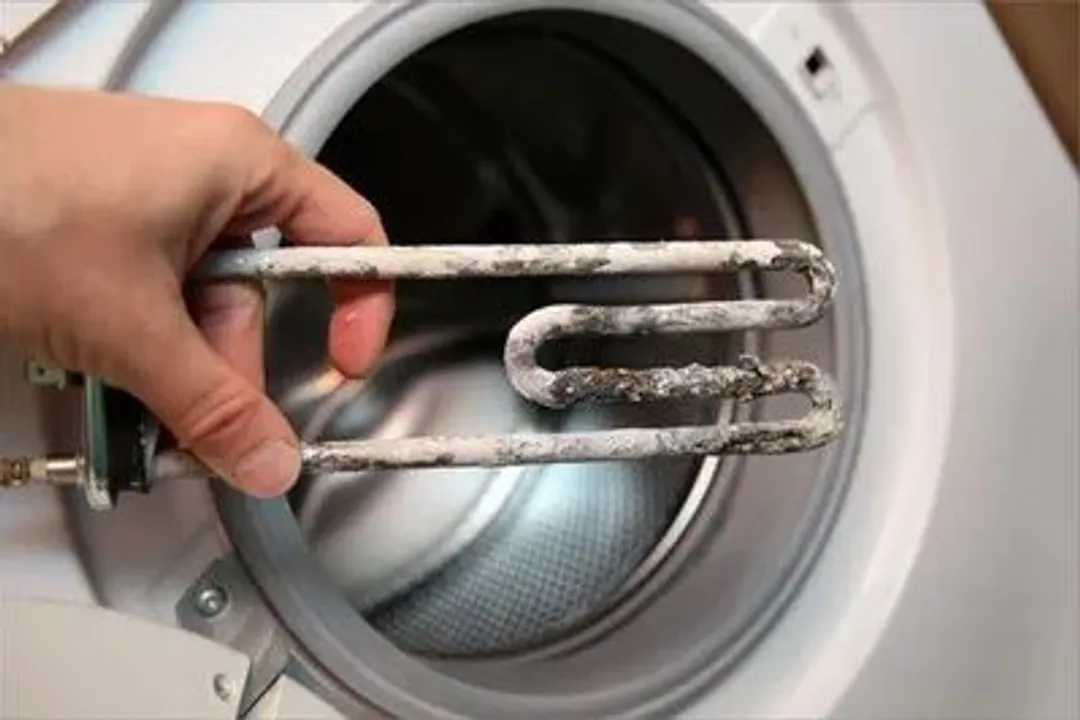
Many households with hard water face the problem of limescale buildup inside their pipe systems, water fixtures, and appliances.
Depending on the level of hardness, the residue can ruin the appearance of the equipment— leaving stains on the faucets, for example.
The residue can also wreak havoc on the appliances internally by forming limescale, which leads to broken parts, clogging, and leakage. You will see more serious damage in your pipes, boiler, and traditional or tankless water heater. These are places where the water tends to sit still for long hours, allowing the minerals to stick to their internal surfaces.
2. Skin Irritation

The high pH and mineral content in hard water can be the cause of various skin problems, including dryness, itchiness, clogged pores, and acne. That’s the reason why a dermatologist may sometimes suggest washing your face with bottled water when you’re having an acne breakout.
Hard water is known to worsen existing skin problems such as eczema and dermatitis. The mineral residue is also blamed for hair brittleness and scalp irritation after direct contact.
3. Persistent Stains
The minerals in hard water tend to stick to surfaces. They create grungy spots and stains on your glassware, tiles, cars, shower heads, toilet bowls, and bathtubs. To add insult to injury, these minerals can neutralize soap and detergents. As a result, these stains usually take extra effort— and extra soap— to remove.
Signs You Have Hard Water
Not sure if you have hard water? There are several telltale signs:
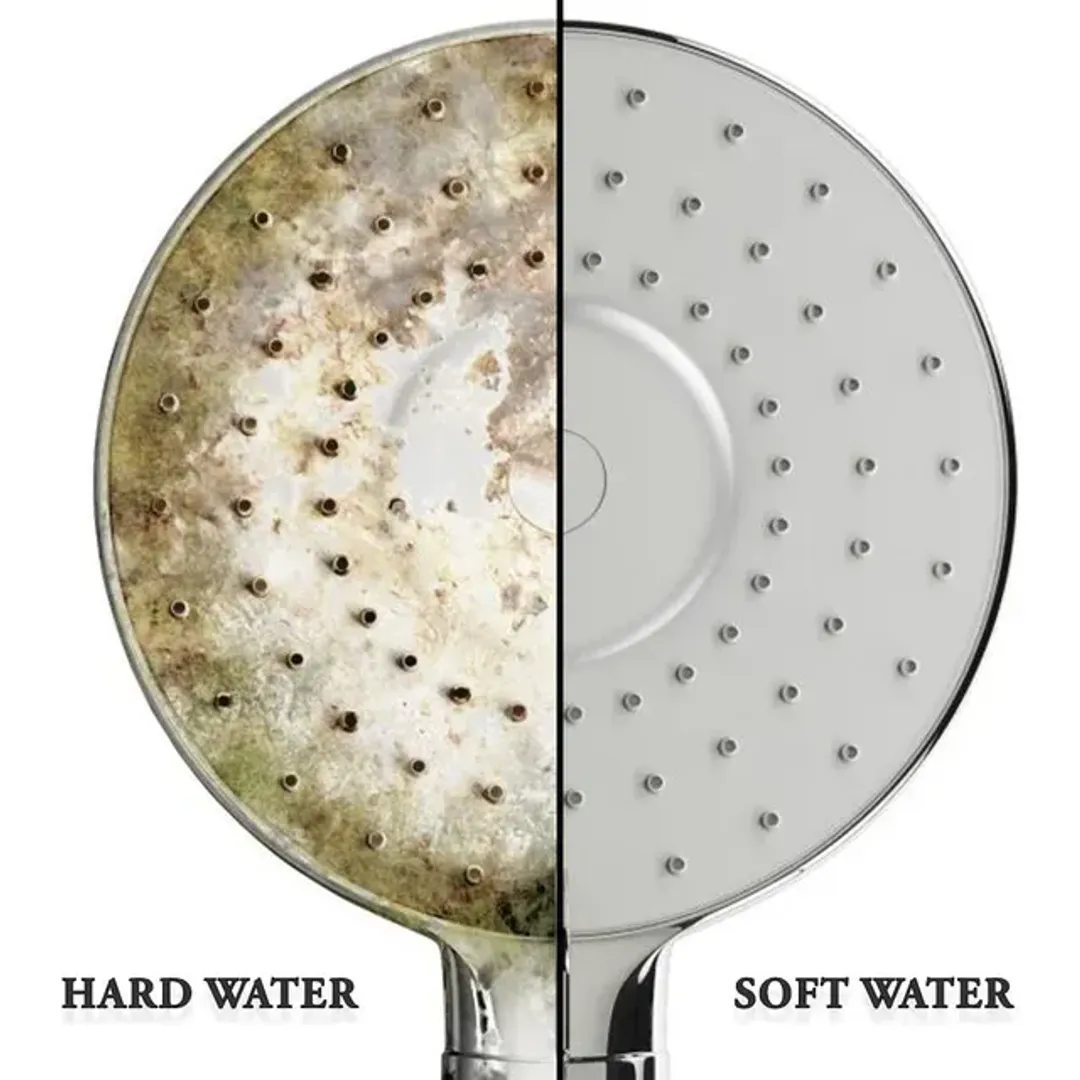
- A clogged showerhead,
- A subtle layer of white residue on your skin after a shower,
- Rough-textured laundry, clothes that fade quickly, and white clothes that turn yellow after a few washes,
- Slower water flow over time,
- Plumbing that requires constant maintenance due to limescale,
- Mineral residue on the bottom of a kettle or coffee maker carafe,
- Leakage and damage to various appliances,
- An unpleasant smell in your water,
- A film of residue on your glassware, mirrors, tiles, or your car after cleaning. If the hard water also happens to contain a decent amount of iron, you will likely find yourself scrubbing yellowish stains from your tiles, toilet bowl, and bathtub.
The Benefits of Water Softening Systems
There are a number of reasons why household water softening systems are becoming increasingly popular.
1. A Scale-Free Pipe System
As explained earlier, the minerals in hard water tend to create limescale on pipes and can cause damage over time.
The whole-house water softening process removes the minerals responsible for the formation of limescale. Thus, it can effectively eliminate the cause of the problem. It’s one of the most effective ways to cut maintenance costs on your plumbing in the long run.
2. Residue-Free Appliances
By preventing mineral buildup, a water softener helps reduce leakage and prolong the life of your household appliances. It also saves you from the foul smell that usually emerges from residue inside your faucets, bathroom sinks, showerheads, and water heater.
3. Smoother Hair and Skin
Shower head filters, while proven to be effective at improving water quality, do not have the capability to filter out hard minerals.
If you’ve been washing with hard water and having poor luck with your skin and hair care, try a water softener. It can really be a game changer in reducing skin irritation and hair dryness.
That said, not everyone likes the sensation of bathing with soft water. While most people think it feels smooth and “clean,” some may find it unpleasantly slippery. It’s simply a matter of personal preference.
4. Softer Clothes
Once your water is free of unwanted mineral particles, you should notice your clothes and towels getting silkier and softer after laundry. Soap scum and stains should become less of a problem, and the fabrics will take longer to fade or fray.
Since detergents and soap dissolve better in soft water, you will need less detergent to wash the same amount of clothes.
5. Clean, Shiny Glassware and Silverware
A water softener either removes or alters the structure of the minerals, preventing them from sticking to surfaces. As a result, you should no longer see a calcium film on your mirrors, glasses, or car after washing.
How to Soften Hard Water
Below are the two most effective methods to take care of water hardness.
1. Whole-House Filtration
Modern whole house water filtration systems are a common solution to sediment, rust, algae, and even harmful contaminants. Unfortunately, most of these systems are not designed for the removal of minerals.
At the moment, the only type of whole-house filter that can deal with water hardness is the reverse osmosis (RO) filter. However, while whole-house RO systems are highly effective at purifying and softening water, they can be quite expensive. This is especially true if you take into consideration not only the initial cost of the system itself, but also installation and maintenance costs.
2. Whole-House Water Softening
Water softening systems can either replace the minerals in the water with sodium or change their structure so that they won’t adhere to surfaces. That’s how softening systems reduce limescale.
Whole-house water softening systems are very efficient at eliminating hard-water-related issues. They also do so at much cheaper prices than RO systems.
The problem is that some softeners may introduce sodium into your water while not removing other harmful substances such as lead or arsenic. You could use potassium instead of salt for the softener, but if you also want to filter out the contaminants, a combined setting is recommended.
3. The Recommended Solution: A Mixed Setting
An efficient way to address water hardness is to combine a water softening system with an under-sink reverse osmosis filter. The softener will take care of the unwanted minerals, producing soft water for hygienic purposes in the whole house. The under-sink RO filter, meanwhile, removes harmful contaminants in your drinking and cooking water. This is a well-rounded system as it targets both types of impurities while being more affordable compared to a whole-house RO system.
Salt-based vs. Salt-free Softeners
A salt-based softener removes minerals that cause hard water, while a saltless one changes mineral structures to prevent them from sticking to surfaces.
Salt-free systems use potassium to crystallize minerals in the water, thus reducing the chance of scale formation. They can deliver about the same results as their salt-based counterparts, so long as you’re targeting pipe limestone. Plus, they’re easy to install, require very little maintenance, and you don’t have to add salt every now and then.
Still, they’re less popular than salt-based systems. The reason is their reduction in effectiveness when exposed to some chemicals, including chlorine, which is present in the city water that most people use.
Salt-based water softening systems have the upper hand when it comes to preventative measures. Unlike salt-free systems, they actually remove the minerals from the water. They can avert mineral buildup in appliances with intermittent running water, such as heaters, dishwashers, and coffeemakers, among others. That’s why they’re the preferred choice in homes with high-level hard water despite their more cumbersome maintenance.
How Much Sodium Is Added to Water During Softening?
Salt water softening systems remove minerals from water, but they also leave behind a certain amount of sodium during the process.
During our research into sodium concentration levels in softened water, a number that came up repeatedly was 12.5mg of sodium per 8 ounces of water. But is this amount significant enough to affect our health? We asked Lauren Harris-Pincus, a Registered Dietician Nutritionist who holds a Master’s degree in Clinical Nutrition from New York University.
“With 12.5mg of sodium per 8 ounces of water, a consumption level of 2 quarts per day would equal a sodium intake of only 100mg which is considered a low sodium count by the Food and Drug Administration”, says Harris-Pincus, who’s also a founder and specialist at Nutrition Starring You LLC.
For reference, the recommended sodium intake by the Dietary Guidelines for Americans is 2300mg per day or less.
In a further study we dug up online, the mean sodium concentration of softened well water was found to be approximately 278 mg/L. That’s only half the concentration of sodium in raw cow milk (534.1mg/L). But, in the recommended 2 quarts, it amounts to 526 mg or 22% of the standard recommended intake.
“If you suffer from hypertension and need to significantly limit your sodium intake, the amount in soft water might make a difference,” notes Harris-Pincus.
The harder the water, the more salt the whole-house softening process will leave behind. If your water hardness is at the higher end of the scale, even healthy adults will have to be careful to keep their sodium intake within limits.
If you need to be on a low-sodium diet, a salt-free softener is a safer choice. If you’re using a salt-based softener, install an extra reverse osmosis filter under the sink to take care of the salt as well as many other impurities.
How to Clean Hard Water Stains
A water softening system can prevent new hard water stains from forming, but it can’t remove the stains that are already there. Because hard minerals can neutralize soap, scrubbing them off is rarely a walk in the park.
If you are having no luck getting rid of these stains, read on for some proven tips.
How to Clean Hard Water Spots
Water spots are an easily-addressed annoyance—if you know how to deal with them. They often show up on surfaces that aren’t usually submerged in water, such as your mirror or car. The whitish chalky residue tends to appear right after a wash when the water has just dried up. But if you act quickly, the spots should be quick to vanquish.
The easiest and cheapest way to clean hard water spots is to use a water-vinegar solution.
Make the solution by mixing together equal parts white vinegar and water. Using a spray bottle, spritz the solution onto the surface you wish to clean. Wait about one minute for the solution to take effect before wiping with a clean piece of cloth. Wipe the area dry afterwards with another clean cloth.
How to Clean Hard Water Stains That Have Been There Forever
The same water-vinegar mixture can be applied to more stubborn stains but it won’t work quite as quickly. You’ll have to give the solution some time to really take effect.
The steps are simple: Mix up your solution using equal parts water and vinegar. Dip a clean piece of cloth into the solution until fully soaked. Drape the cloth over the stain and leave it there for an hour.
When the hour has passed, use the cloth to scrub off the stains.
If you’re dealing with hard water stains in a toilet bowl, pour about ⅓ gallon of vinegar into the bowl so that it reaches all of the stains. Let it sit for about an hour before scrubbing it away with a non-abrasive sponge and more vinegar.
About your guide
Luna Regina is an accomplished writer and author who dedicates her career to empowering home cooks and making cooking effortless for everyone. She is the founder of HealthyKitchen101.com and HealthyRecipes101.com, where she works with her team to develop easy, nutritious recipes and help aspiring cooks choose the right kitchen appliances.
